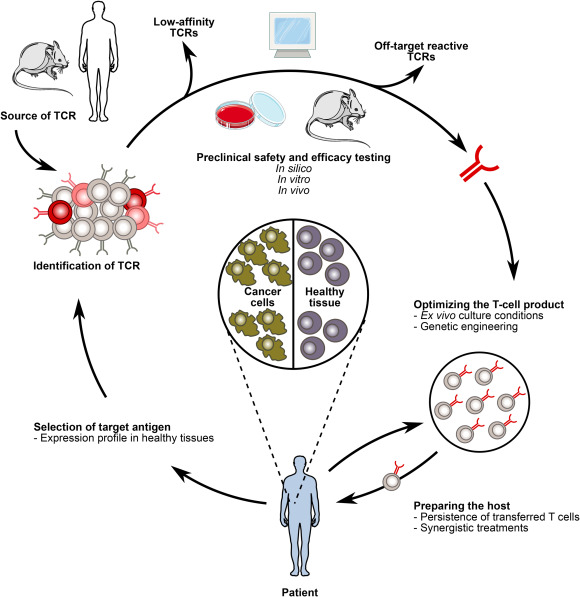- 2.
Robert, C. et al. Anti-programmed-death-receptor-1 treatment with pembrolizumab in ipilimumab-refractory advanced melanoma: a randomized dose-comparison cohort of a phase 1 trial. Lancet 384, 1109–1117 (2014).
- 3.
Powles, T. et al. MPDL3280A (anti-PD-L1) treatment leads to clinical activity in metastatic bladder cancer. Nature 515, 558–562 (2014).
- 4.
Alexandrov, L. B. et al. Signatures of mutational processes in human cancer. Nature 500, 415–421 (2013).
- 5.
Dawood, S. et al. Trends in survival over the past two decades among white and black patients with newly diagnosed stage IV breast cancer. J. Clin. Oncol. 26, 4891–4898 (2008).
- 6.
Le, D. T. et al. Mismatch repair deficiency predicts response of solid tumors to PD-1 blockade. Science 357, 409–413 (2017).
- 7.
Hamanishi, J. et al. Safety and antitumor activity of anti-PD-1 antibody, nivolumab, in patients with platinum-resistant ovarian cancer. J. Clin. Oncol. 33, 4015–4022 (2015).
- 8.
Tran, E. et al. Immunogenicity of somatic mutations in human gastrointestinal cancers. Science 350, 1387–1390 (2015).
- 9.
Tran, E. et al. T cell transfer therapy targeting mutant KRAS in cancer. N. Engl. J. Med. 375, 2255–2262 (2016).
- 10.
Tran, E. et al. Cancer immunotherapy based on mutation-specific CD4+ T cells in a patient with epithelial cancer. Science 344, 641–645 (2014).
- 11.
Stevanović, S. et al. Landscape of immunogenic tumor antigens in successful immunotherapy of virally induced epithelial cancer. Science 356, 200–205 (2017).
- 12.
Cerami, E. et al. The cBio cancer genomics portal: an open platform for exploring multidimensional cancer genomics data. Cancer Discov. 2, 401–404 (2012).
- 13.
Lefebvre, C. et al. Mutational profile of metastatic breast cancers: a retrospective analysis. PLoS Med. 13, e1002201 (2016).
- 14.
The Cancer Genome Atlas Network. Comprehensive molecular portraits of human breast tumors. Nature 490, 61–70 (2012).
- 15.
Dudley, M. E. et al. Adoptive cell therapy for patients with metastatic melanoma: evaluation of intensive myeloablative chemoradiation preparative regimens. J. Clin. Oncol. 26, 5233–5239 (2008).
- 16.
Abate-Daga, D. et al. Expression profiling of TCR-engineered T cells demonstrates overexpression of multiple inhibitory receptors in persisting lymphocytes. Blood 122, 1399–1410 (2013).
- 17.
Assadipour, Y. et al. Characterization of an immunogenic mutation in a patient with metastatic triple-negative breast cancer. Clin. Cancer Res. 23, 4347–4353 (2017).
- 18.
Jin, J. et al. Simplified method of the growth of human tumor-infiltrating lymphocytes (TIL) in gas-permeable flasks to numbers needed for patient treatment. J. Immunother. 35, 283–292 (2012).
- 19.
Pasetto, A. et al. Tumor- and neoantigen-reactive T cell receptors can be identified based on their frequency in fresh tumor. Cancer Immunol. Res. 4, 734–743 (2016).
- 20.
Cohen, C. J., Zhao, Y., Zheng, Z., Rosenberg, S. A. & Morgan, R. A. Enhanced antitumor activity of murine–human hybrid T cell receptor (TCR) in human lymphocytes is associated with improved pairing and TCR–CD3 stability. Cancer Res. 66, 8878–8886 (2006).
- 21.
Haga-Friedman, A., Horovitz-Fried, M. & Cohen, C. J. Incorporation of transmembrane hydrophobic mutations in the TCR enhance its surface expression and T cell functional avidity. J. Immunol. 188, 5538–5546 (2012).
- 22.
Aldrich, J. R. A. Fisher and the making of maximum likelihood. 1912–1922. Stat. Sci. 12, 162–176 (1997).
Acknowledgements
The authors would like to thank A. Mixon and S. Farid of the Surgery Branch FACS Core for assistance with data acquisition and cell sorting, and J. Yang and E. Tran for their valuable discussions. This work was supported by the Center for Cancer Research at the National Cancer Institute (NCI) at the US National Institutes of Health (NIH).
Author information
Affiliations
-
Surgery Branch, National Cancer Institute, National Institutes of Health, Bethesda, MD, USA
- Nikolaos Zacharakis
- , Harshini Chinnasamy
- , Mary Black
- , Hui Xu
- , Yong-Chen Lu
- , Zhili Zheng
- , Anna Pasetto
- , Michelle Langhan
- , Thomas Shelton
- , Todd Prickett
- , Jared Gartner
- , Li Jia
- , Robert P. Somerville
- , Paul F. Robbins
- , Steven A. Rosenberg
- , Stephanie L. Goff
- & Steven A. Feldman
-
Department of Surgery, Virginia Commonwealth University School of Medicine, Richmond, VA, USA
- Katarzyna Trebska-McGowan
Contributions
N.Z. designed and performed the experiments, analyzed and interpreted the data, and co-wrote the manuscript; H.C., M.B. and H.X. performed experiments; Y.-C.L., Z.Z. and A.P. designed and performed experiments for single-cell PCR and sequencing for TCR identification and pairing; R.P.S., M.L. and T.S. maintained and developed clinical-grade lymphocytes for patient infusion; P.F.R., T.P., J.G. and L.J. performed and analyzed WES and RNA-seq data for mutation profiling; K.T.-M. (under the direction of S.L.G. and S.A.R.) was responsible for the clinical care of the patient during protocol treatment; S.A.R. conceived the hypothesis, interpreted the data and co-wrote the manuscript; S.L.G. and S.A.F. coordinated the project, analyzed and interpreted data and co-wrote the manuscript.
Competing interests
The authors declare no competing interests.
Corresponding author
Correspondence to Steven A. Rosenberg.



 Bron foto is
Bron foto is
Plaats een reactie ...
Reageer op "Borstkanker: Vrouw met uitgezaaide hormoongevoelige borstkanker (HR-pos) komt in een duurzame complete remissie met immuuntherapie met anti-PD medicijn en TIL - tumor Infiltrating lymfocyten gericht op 4 specifieke mutaties"